A certain shopping mall has set up a fire automatic alarm system, where the 2# loop bus of the fire alarm controller is shared by two fire compartments on the first floor. Fire compartment one has 30 smoke fire detectors, 10 manual fire alarm buttons, and 10 bus modules (2 inputs and 2 outputs); fire compartment two has 28 smoke fire detectors, 8 manual fire alarm buttons, and 10 bus modules (2 inputs and 2 outputs). The number of short circuit isolators set for the controller’s 2# loop bus should be at least ( ).
A.3 units B.6 units C.4 units D.5 units
Reference answer C
1. Principle of Short Circuit Isolators
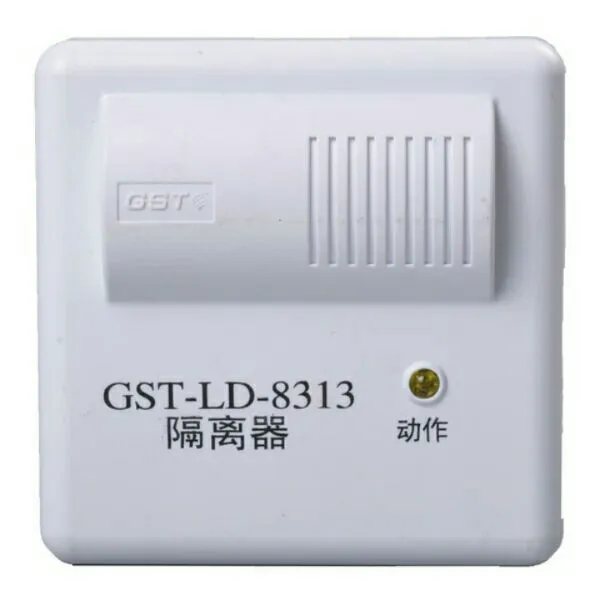
Short circuit isolators are devices used in the transmission bus of fire alarm systems to isolate branches during a short circuit. They can automatically make the ends of the short circuit part present a high-resistance state or open circuit state, preventing damage to the controller and ensuring that other components on the bus operate normally. Once the short circuit fault is eliminated, they can automatically restore the normal operation of this part of the circuit.
Short circuit isolators act like automatic switches, isolating the controller from the external alarm devices that are experiencing a short circuit. When a grounding or short circuit fault occurs in the external line, the isolator automatically disconnects, at which point the external alarm device line will be disconnected from the main line of the fire control center, and other circuit devices will not be affected. Once the external device line returns to normal, operating the “reset” function on the fire control host will restore normal operation.
2. Functions of Short Circuit Isolators
They are used in the secondary bus input circuit. When a short circuit occurs at a certain point in the control bus input circuit, the isolator at the front end automatically operates to disconnect the output bus circuit, protecting other parts of the bus input circuit to work normally. Once the fault point is eliminated, the short circuit isolator will automatically reconnect the bus circuit.
They can prevent a short circuit or grounding in a certain circuit from causing current to return to the fire control host, affecting other fire circuits. If severe, it may damage the circuit board and motherboard of the fire control host, leading to the paralysis of the fire control host. Installing short circuit isolators can protect the fire control host and ensure that other circuits work normally.
3. Setting of Bus Short Circuit Isolators
1. When the bus crosses fire compartments, short circuit isolators should be set at the crossing points. (Generally not tested in ring circuits)
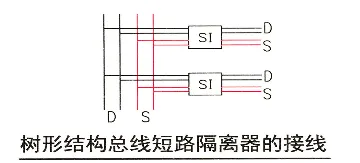

In the illustration 3, if the bus only passes through the fire compartment without connecting any devices inside, short circuit isolators are not required to be set up within that fire compartment.
2. Short circuit isolators should be set on the system bus, and the total number of fire detectors, manual fire alarm buttons, and modules protected by each short circuit isolator should not exceed 32 points.
This stipulates the requirements for setting short circuit isolators on the bus, stating that the number of on-site components protected by each short circuit isolator should not exceed 32 points. This is to ensure that when a certain on-site component fails, the isolator can isolate the faulty component while maximizing the overall functionality of the system.

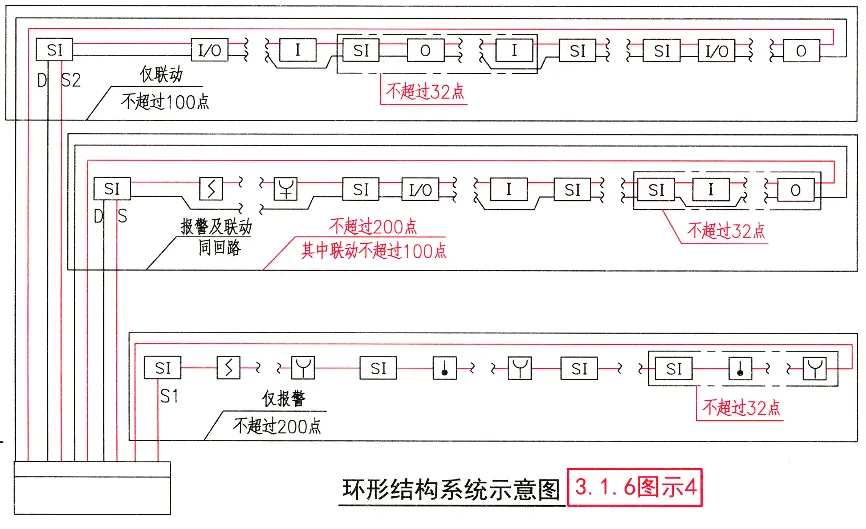
3. In buildings exceeding 100m in height, except for controllers set in the fire control room, each controller directly controlling fire detectors, manual alarm buttons, and modules should not cross refuge floors.
4. Short circuit isolators can be installed in module boxes or mounted on walls nearby, with the bottom edge at a height of 2.2m from the ground. When installed in ceilings, the bottom edge should be 0.2m away from the ceiling, and there should be a maintenance ceiling nearby with clear markings.
Students should not be too pedantic about some fire safety knowledge and regulations during their learning process. Most theories come from practice, but many theories also have room for improvement. The exam is more about passing rather than trying to achieve high scores. Most of the current fire exams are based on fundamental knowledge and practical cases from life. Therefore, mastering the basic knowledge from textbooks and combining it with practical life will make it hard to fail. Do not get too caught up in minor details during the exam.
How to prepare for the 2024 exam and plan? Specific details can be discussed with Teacher Qingmu.
How much have you learned from today’s content? Go to the comment area to check in!
Flow does not compete for the first, but for being unceasing!
Welcome more students preparing for fire safety certification to join the fire exam preparation.
Recent hot articles for fire engineers Click the related text below to view:
2024 Fire Exam Preparation: Setting and Quantity Calculation of Fire Detectors
2024 Fire Exam Preparation: Understanding Foam Fire Extinguishing Systems!
Useful tips for the objective questions in the three subjects of the first-level fire exam; highly recommended for saving!
[Case Analysis] Exam Points and Matching Questions, clearer key points (Sprinkler System)
Countdown to the 2024 First-Level Fire Exam161days
Time is very tight now until the first-level fire exam!
VIP Study Class for Fire Exam Preparation (First and Second Level)
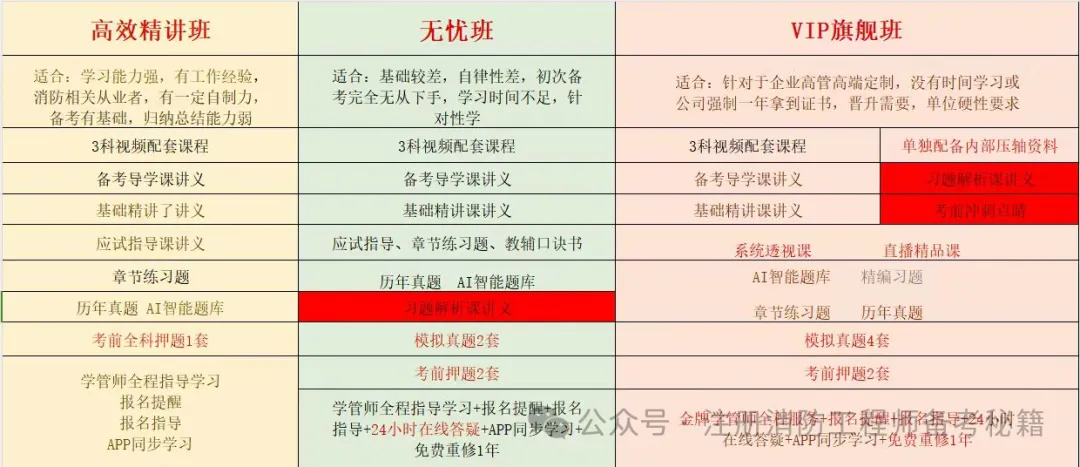
Comprehensive Lecture Class for Fire Textbooks
In-depth lectures on all chapters, covering all exam points from the textbooks! Key points from the textbooks are simplified for easy mastery, ensuring high scores even for beginners.
[Learn fire safety with professional courses]
Effortlessly obtain the latest exam updates and preparation experiences
Make fire exam preparation more efficient!
Teaching Aids + Intensive Training Question Bank
1. Compiled Exercise Collection

2. Mnemonic Note Book
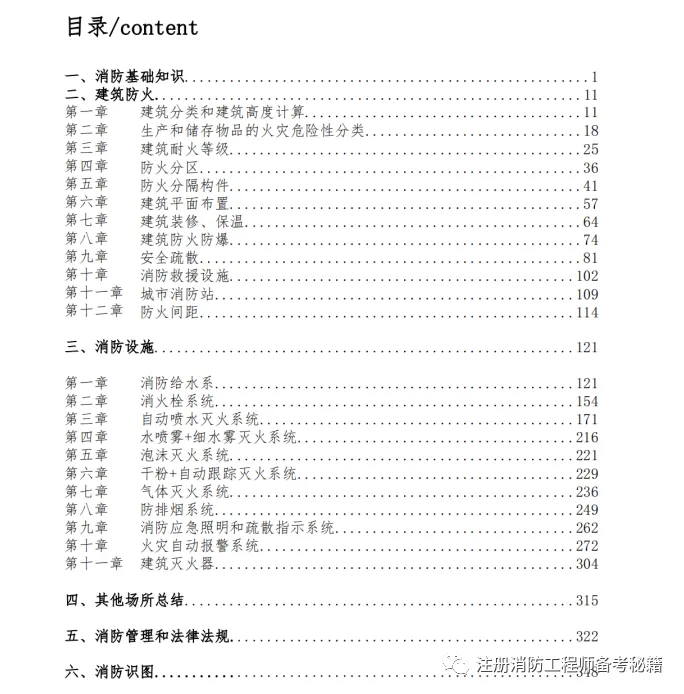


3. Pre-exam Training Simulation
About a month before the exam each year
Welcome more students preparing for fire safety certification to join Teacher Qingmu’s family,
Exclusive consultation time: (Working hours 9:00-22:00)

Name + Degree + Graduation Year + Contact Information + Exam Level
Consult about preparation: Get the 2024 preparation study plan + one-on-one Q&A guidance
Join the group for preparation discussions: Add a note for fire engineer preparation (follow group rules when joining)










